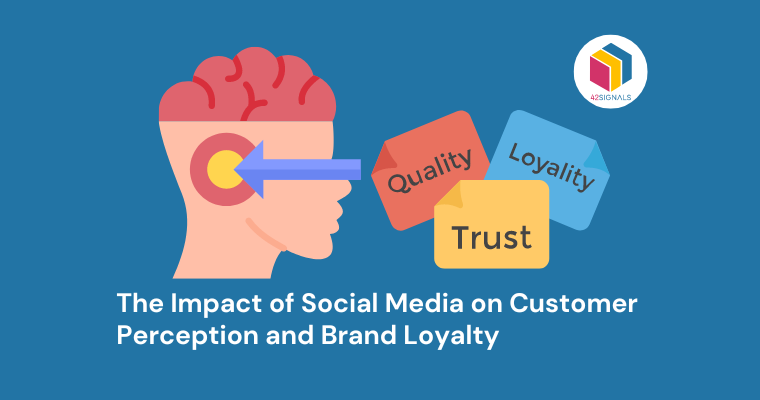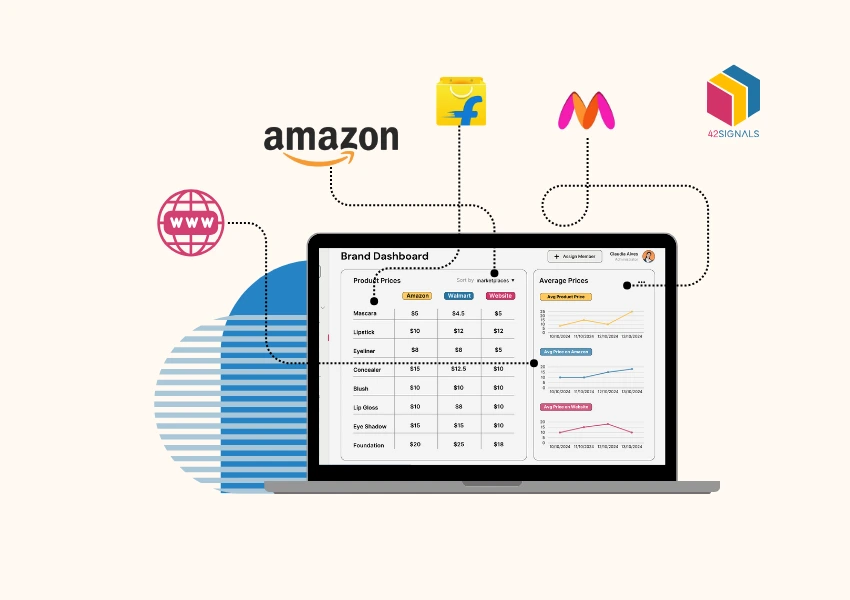The daily average time spent on social networking sites worldwide went from 90 minutes in 2012 to a whopping 151 minutes in 2023. With billions of active users across various platforms such as Facebook, Instagram, Twitter, LinkedIn, and TikTok, social media offers businesses unprecedented opportunities to reach out to their target audience, engage with customers, and build brand loyalty. With social media being such an important aspect of shopping today, its influence extends toward customer perception and brand loyalty. Because that’s how a shopper perceives the brand and is likelier to engage with the business.

Image Source: Statista
The Role of Social Media in Shaping Customer Perception
Customer perception refers to consumers’ collective impression or opinion about a particular product, service, or company. It is crucial because it significantly impacts purchasing decisions and long-term brand relationships. In recent years, social media has emerged as a powerful tool capable of shaping customer perceptions in several ways:
- Increased Visibility and Awareness: Through regular posting, sharing user-generated content (UGC), running targeted ad campaigns, and engaging in conversations, brands can enhance their visibility and brand awareness among potential customers. By consistently delivering valuable and relevant content, companies can positively influence consumer attitudes towards their offerings.

Image Source: The Guardian
Consider Nike, whose “Just Do It” campaign featuring Colin Kaepernick went viral on social media. Regardless of whether people agreed or disagreed with Nike’s stance, the controversy generated widespread discussion, leading to heightened exposure and debate surrounding the brand. Consequently, Nike saw an increase in sales despite initial pushback from certain segments.
- Building Credibility and Trust: Authentic interactions between brands and customers foster trust and credibility. Responding promptly to queries, addressing concerns, acknowledging mistakes, and providing timely resolutions demonstrate transparency and commitment to customer satisfaction. As a result, positive word-of-mouth spreads rapidly, enhancing brand reputation and customer perception.

Image Source: Keegan Osinski
Warby Parker exemplifies trust-building through its exceptional customer service on social media. They respond quickly and genuinely to questions, comments, and complaints, ensuring issues are resolved satisfactorily. Their proactive approach generates confidence in both the brand and its products, resulting in a growing base of devoted fans and improved customer perception.
- Humanizing Brands: Traditional advertising methods often portray brands as faceless entities. However, social media enables organizations to creatively showcase their personality, values, and unique selling points. By connecting with audiences at a personal level, businesses can create emotional bonds that drive affinity and preference for their products or services.
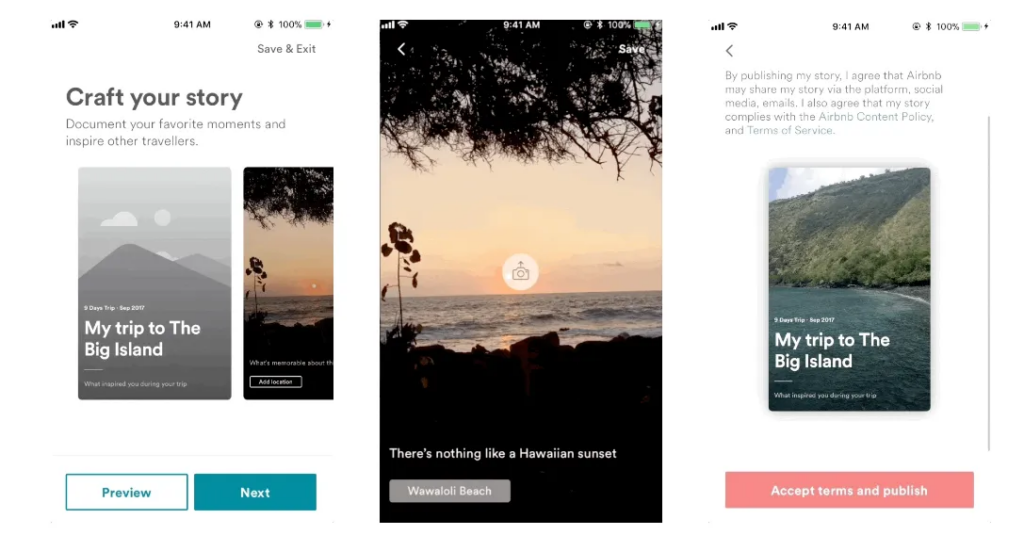
Image Source: Conde Nast Traveler
Airbnb shares stories of travelers using its platform to explore new destinations and cultures, emphasizing the importance of community and adventure. These narratives convey warmth and authenticity, creating a relatable persona that appeals to users who appreciate personalized accommodations and experiences over traditional hotels.
- Real-time Feedback and Improvement: Listening attentively to customer feedback shared on social media allows brands to identify areas requiring improvement swiftly. Addressing grievances publicly demonstrates responsiveness and dedication to meeting customer needs, thereby influencing customer perceptions favorably.
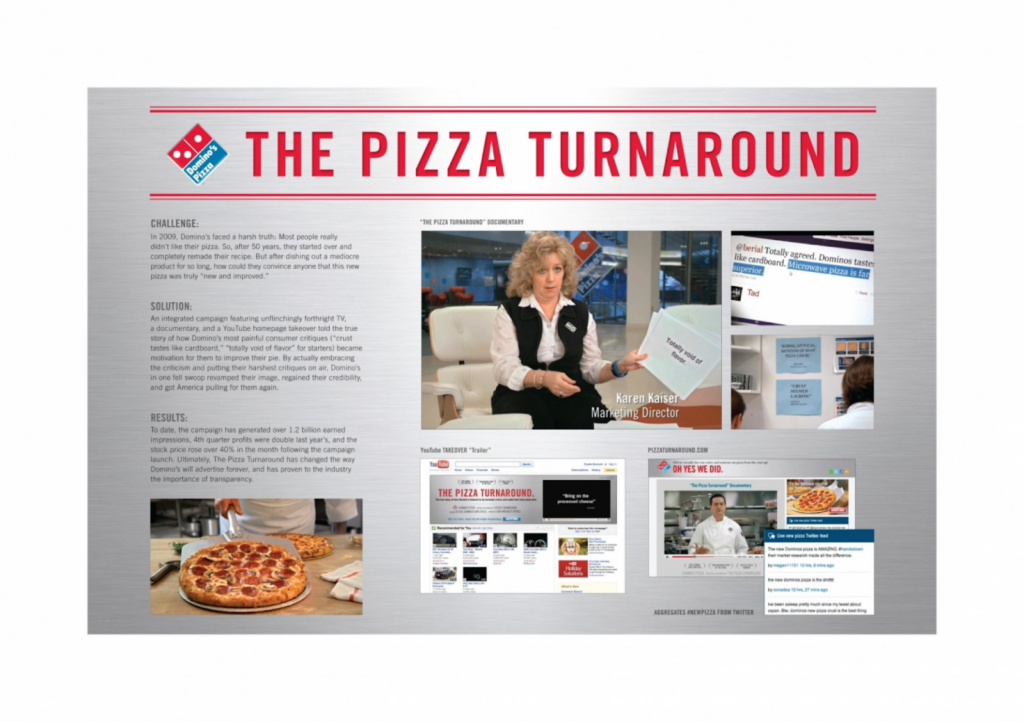
Image Source: Love the Work
Domino’s Pizza successfully turned around its tarnished reputation by actively seeking and implementing customer suggestions via social media. After admitting their pizza was subpar, they launched a “Pizza Turnaround” campaign encouraging followers to submit ideas for improving their recipes. Following extensive revisions informed by consumer insights, Domino’s reported significant improvements in taste and texture – not to mention increased sales and customer approval.
- Crisis Management: When faced with public backlash or negative press, swift action and transparent communication through social media can help mitigate damage to brand image. Apologizing sincerely, taking responsibility, and presenting concrete solutions illustrate accountability and integrity, which can turn adversity into opportunity.
Starbucks faced severe criticism when two African American men were wrongfully arrested at one of their Philadelphia locations. CEO Kevin Johnson issued a formal apology on social media, promising changes in store policies and training procedures to prevent similar incidents in the future. His heartfelt response helped diffuse tension and restore faith in the coffee giant’s commitment to inclusivity and equality.
The Power of Social Media in Strengthening Brand Loyalty
Brand loyalty signifies the degree to which customers prefer one brand over others repeatedly due to consistent positive experiences. Strong brand loyalty translates into repeat purchases, higher retention rates, and increased revenue. Here are some key aspects of how social media contributes to fostering brand loyalty:
- Community Building: Creating dedicated online communities where like-minded individuals gather around shared interests helps reinforce brand identity and strengthen connections. Encouraging discussions, organizing events, recognizing loyal members, and offering exclusive benefits cultivate a sense of belonging and exclusivity, driving deeper engagement and attachment.
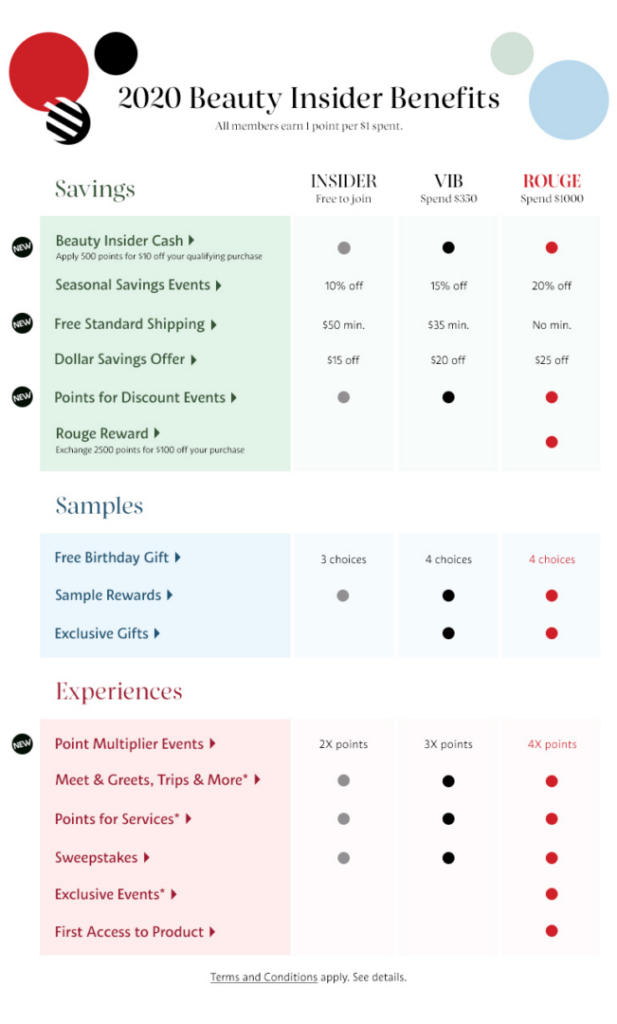
Image Source: Business Wire
Sephora’s Beauty Insider program boasts millions of engaged members who participate in discussions, exchange tips, attend workshops, and earn rewards for purchases made both online and offline. This inclusive environment fosters camaraderie among beauty enthusiasts while solidifying ties to the retailer and improves the brand’s customer perception.
- Personalization and Customization: Leveraging data analytics capabilities offered by social media platforms, marketers can tailor messages, promotions, and recommendations based on individual preferences and behaviors. Highly personalized content resonates better with customers, reinforcing their decision to remain loyal to the brand.
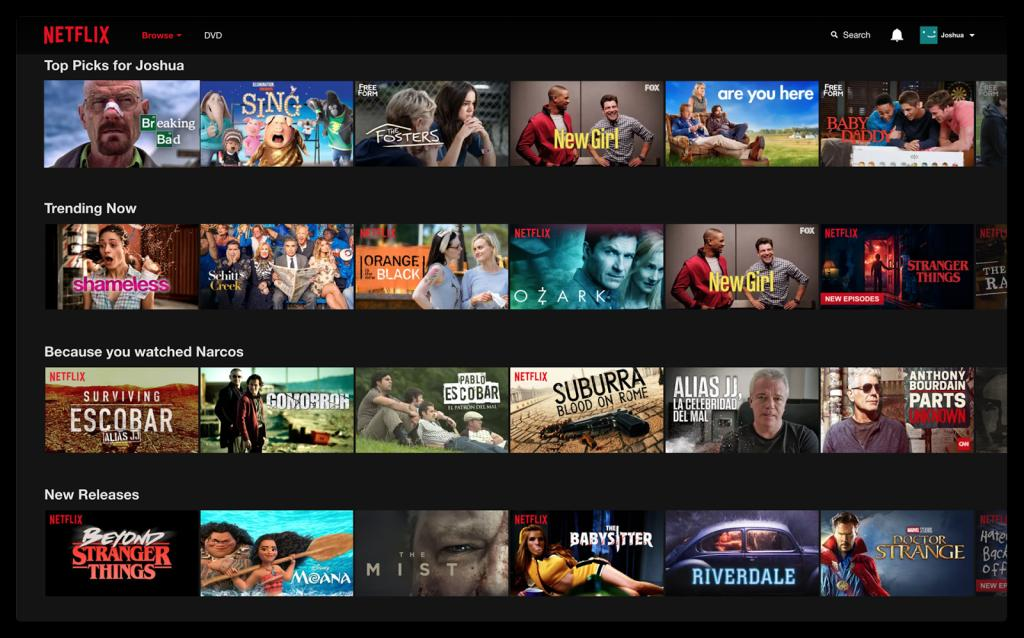
Image Source: Recostream
Netflix curates custom playlists and recommends shows based on viewers’ viewing habits, enabling highly personalized content discovery. Users appreciate the effort invested in understanding their tastes and preferences, increasing satisfaction and loyalty.
- Advocacy Programs: Empowering satisfied customers to advocate for the brand by incentivizing them to share referrals, reviews, testimonials, and UGC amplifies reach and authenticity. Rewarding advocates through loyalty programs further encourages ongoing support and promotes long-term affiliation.

Image Source: Autoevolution
Tesla owners frequently promote the electric vehicle manufacturer without any direct incentives beyond pride in owning an eco-friendly mode of transportation. Elon Musk even referred to his clientele as “the most passionate fans in the world.” Enthusiastic supporters regularly post photos, videos, and glowing reviews of their vehicles, generating organic buzz and attracting prospective buyers.
- Gamification Strategies: Introducing gamified elements such as leaderboards, badges, challenges, and rewards within social media initiatives motivates participation, boosts motivation, and drives desired actions. Such interactive engagements foster stronger attachments to the brand while promoting friendly competition and collaboration among participants.
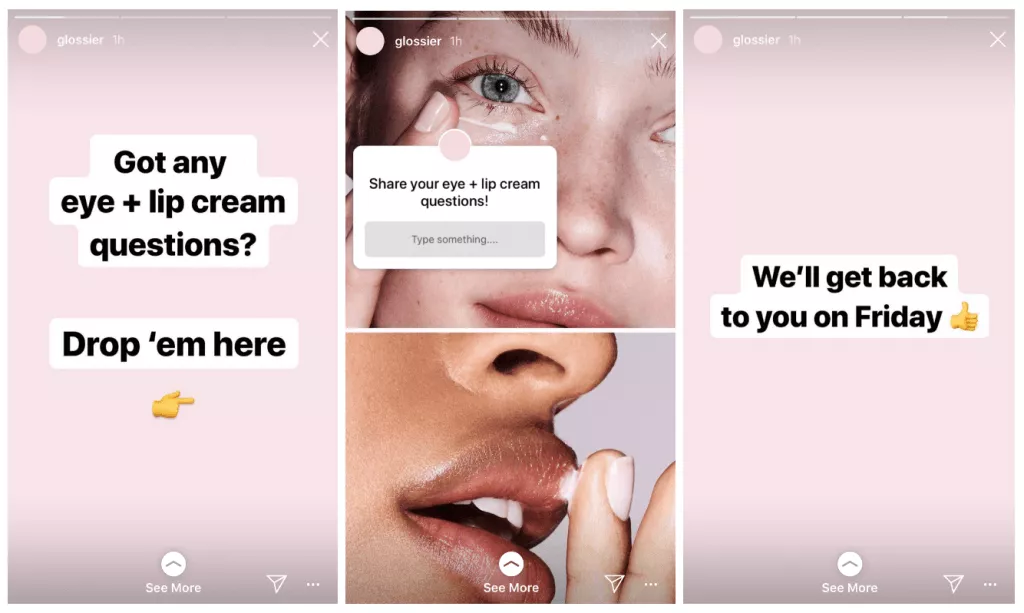
Image Source: Napoleon Cat
Glossier utilizes quizzes and polls on Instagram Stories to encourage interaction with its audience, awarding prizes to lucky winners selected randomly. Fans enjoy participating in these fun activities, deepening their relationship with the cosmetics brand and potentially earning free merchandise.
- Cross-platform Integration: Consistently maintaining a strong presence across multiple social media platforms ensures continuity in messaging, visual identity, and overall experience. Seamless integration of touchpoints enhances convenience and accessibility, making it easier for customers to interact and develop lasting relationships with the brand.
Apple has tremendous brand loyalty and maintains cohesion across all social media accounts, aligning tone, style, and substance regardless of medium. Whether you follow @AppleSupport, @AppStore, or @TimCook, you can expect similarly informative and visually appealing posts, reflecting the tech titan’s meticulous attention to detail and consistency.
Conclusion
Social media holds immense power in shaping customer perception and building brand loyalty. It can be an extremely valuable tool when used correctly to foster loyalty and drive more sales.
The above examples showcase the power of social media and how it influences customer perception, negatively and positively.
Embracing emerging trends, experimenting with innovative formats, and staying committed to ethical practices will enable brands to stand out amidst fierce competition.
